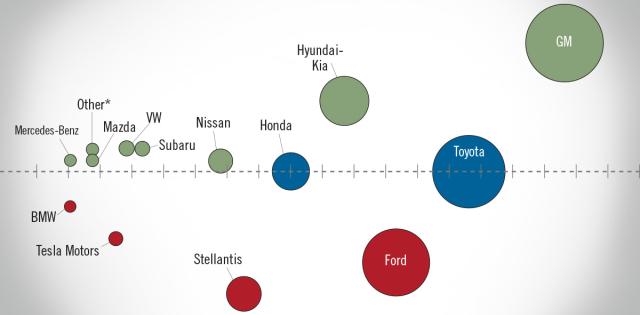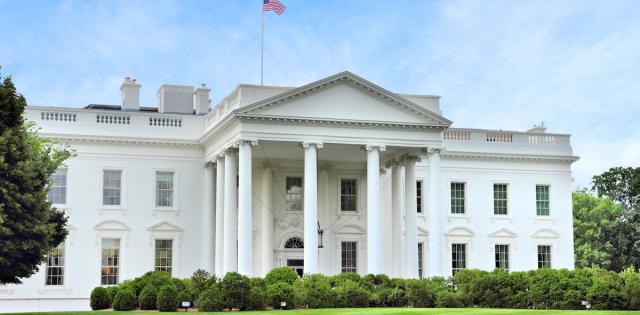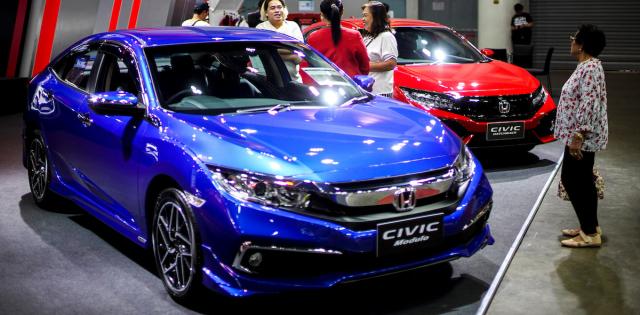Recent media coverage about rising new-vehicle prices fails to account for unprecedented market conditions in the retail auto market. The analysis that follows (which is largely based on J.D. Power PIN data drawn from 42% of all consumer transactions for new vehicles) explains key factors driving vehicle pricing.
- The widespread microchip shortage has sharply cut vehicle production and reduced dealership inventories to 40-year lows, while consumer demand has remained strong. This supply-and-demand imbalance has created significant upward pressure on new-vehicle prices.
- These market forces drove the average price paid by consumers up 13% in 2021. Even with such an increase, the average price paid by consumers during 2021 was still below the Manufacturer’s Suggested Retail Price (MSRP).
- Market forces simultaneously drove up used-vehicle prices by 41%, which significantly increased trade-in values. These larger trade-in allowances more than offset the increase in new-vehicle prices. In fact, new-vehicle buyers with a trade-in paid an average of $305 less in 2021 than in 2020.
Vehicle Production and Inventory Headwinds

New-vehicle transaction prices increased throughout the year as the microchip shortage reduced the supply of new vehicles while consumer and fleet demand remained steady.

Vehicle inventory levels drive manufacturer decisions on incentives—such as rebates, promotional financing and other incentives. In particular, manufacturer incentive spending historically rises and falls as inventories rise and fall. With such low inventory and such high demand, the OEMs reduced their incentive spending each month last year, with reductions in available OEM incentives effectively raising prices for consumers. Average incentive spending per unit in 2021 fell from $3,482 in January to $1,516 in December. For the year, incentive spending per unit averaged $2,429, a decrease of 39.7% compared with full-year 2020.
And the increase in vehicle prices was not limited to the legacy automotive brands. Direct sellers, such as Tesla, also increased their prices in 2021. According to data from Kelly Blue Book, the average transaction price of a Tesla in December 2021 increased by 20.2% year-over-year. While the MSRP of vehicles sold by franchised dealerships have seen only minor increases, the price increases implemented by Tesla are likely to remain permanent.
Despite upward pricing pressure, average new vehicle prices remained below MSRP in 2021
Because of the microchip shortage, manufacturers prioritized production of trucks and SUVs, and among those trucks and SUVs they prioritized production of higher trim models, which contributed to the rise in vehicle prices. Many consumers chose to custom order their vehicles directly from the manufacturer, and some have chosen these higher-trim trucks and SUVs as well.
Because of lower discounting, manufacturer production decisions and consumer preferences, the average transaction price moved closer to MSRP in 2021, increasing by 13% compared with 2020. However, in the aggregate, the average transaction price was still below the average MSRP in 2021.

Trade-in Values Soar—Offsetting New-Car Price Increases
While the supply of new vehicles tightened, many retail and fleet buyers turned to the used-vehicle market, bidding up wholesale and retail used-vehicle prices. Wholesale auction prices set records throughout the year. According to the J.D. Power Used Vehicle Price Index, used-vehicle prices rose 41% in 2021.

Historically, used vehicles depreciate significantly over time, but in the unique supply-constrained market of 2021, used vehicles actually appreciated through the year. As a result, new-vehicle consumers with trade-ins saw average trade-in allowances increase by 33.0% in 2021. Consumers suddenly had 58.5% more equity in their trade-ins that resulted in reduced new-vehicle payments in 2021.
Indeed, after increasing year over year in both 2019 and 2020, the difference between the average trade-in value and average transaction price in 2021 fell by $305, or 1.5%. This means that the average new-vehicle buyer with a trade-in spent less out-of-pocket on the purchase of a new vehicle in 2021 than they would have in 2019 and 2020.

Conclusion
Prices increased for new vehicles in 2021 due to reduced production, low dealership inventories, reduced OEM discounting and high demand from retail consumers and fleet buyers.
The real-world impact on consumers is more complicated. Because used-vehicle prices appreciated at record rates in 2021, new-vehicle buyers with trade-ins were able to more than offset the increased price of their new-vehicle purchase due to higher average trade-in values.











